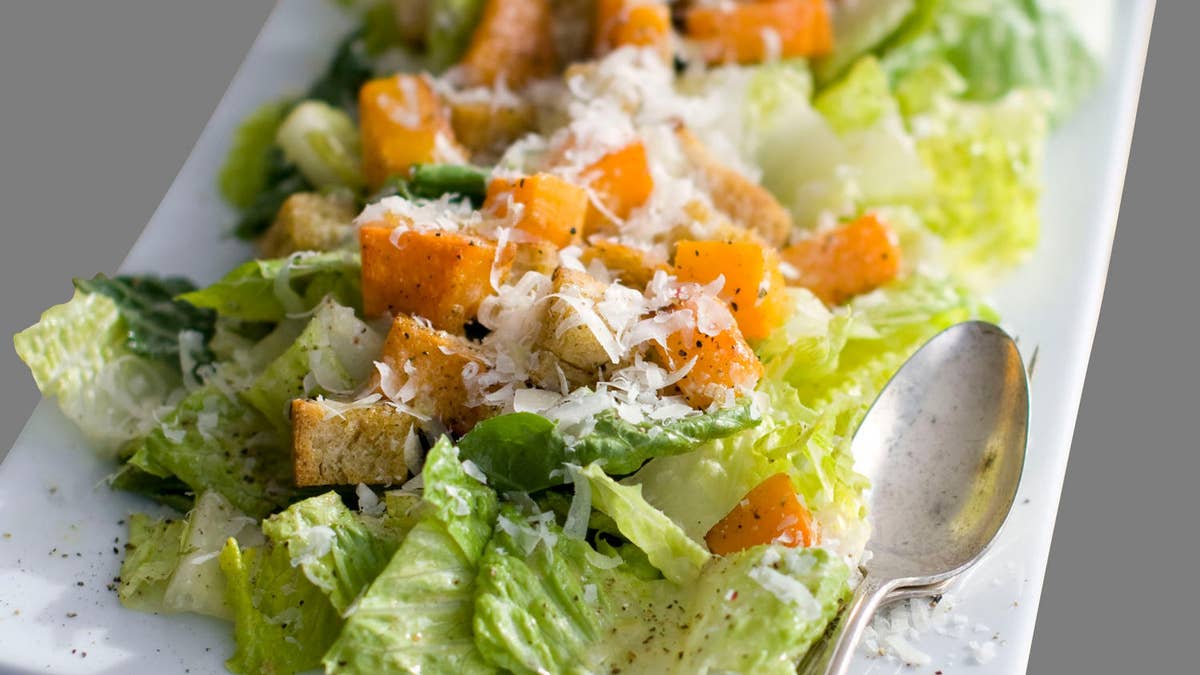
With a name like Caesar (not César) and recipes that contain anchovies and parmesan cheese (not queso blanco), it’s hard to imagine the real origins of Caesar salad. But it was created far from the coast of Italy.
“Yes, the Caesar salad really was invented in Tijuana, México,” says chef Miguel Angel Guerrero, owner of the restaurants La Querencia and El Taller. “We don’t have much in Tijuana, but please, don’t take away our Caesar salad.”
It makes sense then that to kick off TJ’s second annual Baja Culinary Fest, the theme would be “the reinvention of the classic Caesar salad”.
Opening night of the food festival was held in the beautiful Vía Corporativo (TJ’s only LEED office building). Locals, European tourists and SoCal food enthusiasts were in attendance to sample the various innovative versions of the iconic salad, created by some of the most well-known chefs of Tijuana.
It was a reinvention of a cuisine with deep roots in Tijuana.
The history of the salad begins in the 1920s, with Italian immigrant Caesar Cardini. Cardini, who lived in San Diego but owned a restaurant in TJ, was no dummy. He quickly figured out that running his businesses in Tijuana would enable him to avoid the U.S.’s laws of Prohibition. He opened his restaurant, Caesar’s, on Revolución Blvd, in downtown Tijuana. It’s been said that Cardini invented the dish on the Fourth of July in 1924, when the depleted kitchen forced him to make do with what he had.
Adding a dramatic flair with table side tossing "by the chef,” he cemented his dish into history. However, a number of Cardini's staff have claimed to invent the dish.
With the economic and tourist roller coaster of the last few years, the original Caesar’s has ridden the wave, but it's had a few crushing periods as well. Until four years ago, when chef Javier Plascencia and his Grupo Plascencia restaurant consortium, headed by his father, Juan José Plascencia, bought the restaurant and completely revamped the old-school tourist hotspot and bar. The chef’s father and grandfather both worked at the restaurant —Tijuana is a very small big city and everyone knows one another.
If there are any similarities in the many Ceasar's incarnations, it’s the TJ trend of farm to table; many of the chefs prepare menus according to availability of local farms, wineries and butcher shops.
Upstart 28-year-old chef Diego Hernández, of the restaurant Corazón de Tierra, located in the Valle de Guadalupe wine region, says he’s keeping his Caesar version simple. “Our menu changes daily. Actually there is no menu. It’s a five-course meal prepared according to what we’ve grown or caught. So what we have is what we’re serving,” Hernandez says.
L’Escargot Bistrot chef, Ryan Steyn, took his turn at the Caesar with an all-tempura coated fried version. The South African chef and owner of the only French restaurant in TJ says he loves classical French cooking, and since moving with his wife to her hometown of TJ, “there’s been an adjustment, but I’m getting used to it,” says Steyn. With a new baby and a new baby restaurant, there’s a lot to keep the chef and his sommelier wife very busy.
Known for years as a city of tequila and tacos, TJ has seen a recent gastronomic revolution. Visiting chefs like Anthony Bourdain and Rick Bayless have come down to check out the food, as well as celebrities like Robert Redford and Luke Wilson scouting for film locations and schmoozing with the hot chefs of newly dubbed "Baja Med" cuisine.
Director of TJ’s culinary school, Javier Gonzales, insists all his students learn how to make TJ’s pride —the Caesar salad. “And just so you know, the original did not contain any anchovies. The salty taste came from the Worcestershire sauce,” Gonzales says.
Of all the new changes in the local TJ food scene, many thank chef Plascencia, a humble guy who owns several restaurants around the city in addition to Ceasar’s. “The best Ceasar salad is the traditional one, Plascencia says. “The best thing we could have done was to preserve the original Ceasar’s on Revolución. It’s good for the city and good for Mexico.”
